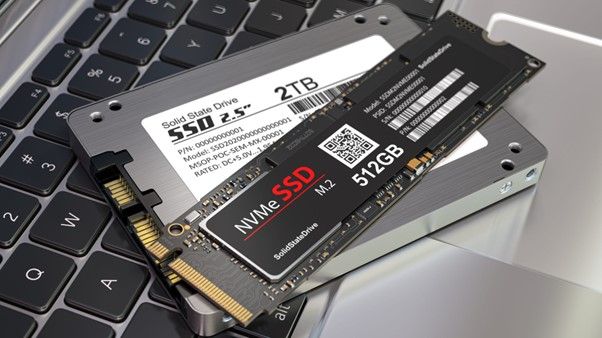The Role of Digital Twins in Modern Network Management
Introduction to Digital Twins
Digital twins are virtual replicas of physical systems designed for simulation, analysis, and optimization. Initially conceived by NASA to optimize rocket performance, these sophisticated models now play a pivotal role in various sectors, including network management.
Digital twins’ potential extends beyond basic modeling, enabling organizations to predict and mitigate risks, enhance resource allocation, and foster innovative solutions. These dynamic virtual models incorporate real-time data, historical context, and advanced simulations to view complex systems comprehensively. As the technology evolves, its applications become increasingly integral to contemporary network management strategies. Digital twins are revolutionizing how we understand and optimize our networks, from telecommunications to intelligent cities.
How Digital Twins Are Used in Network Management
In network management, digital twins serve as comprehensive virtual models, representing a network’s physical and functional attributes. Network administrators can achieve unprecedented operational insight and efficiency by leveraging digital twin technology. These models enable real-time monitoring and automated troubleshooting, significantly enhancing network reliability and performance. Digital twins facilitate proactive maintenance and rapid response to emerging issues by portraying an accurate, dynamic view of the network.
Real-time Analysis
One of the key features of digital twins is real-time data integration. This allows network administrators to continuously analyze the network’s performance, identifying potential bottlenecks and vulnerabilities before they impact operations. Insights derived from real-time analysis can drive preemptive actions, reduce operational risks, and optimize network performance. For instance, administrators can use these insights to adjust bandwidth allocations, reroute traffic, or prioritize certain data types for more efficient network management.
Automated Troubleshooting
Automated troubleshooting is another critical application in which digital twins can simulate various scenarios to pinpoint the causes of network failures. This accelerates problem resolution and helps maintain optimal network performance. In practice, digital twins can run multiple diagnostic tests virtually, eliminating the need for time-consuming manual interventions. This speeds up the troubleshooting process and enhances the accuracy of fault isolation, ultimately leading to higher network uptime and user satisfaction.
Benefits of Using Digital Twins
- Enhanced Predictive Maintenance: Digital twins can forecast potential issues before they become critical. This predictive capability reduces network downtime and minimizes disruptions. Digital twins provide early warnings for timely maintenance and intervention by continually analyzing network data and simulating potential failures, reducing the likelihood of unexpected outages.
- Improved Resource Utilization: Digital twins help optimize resource allocation by simulating different network scenarios, ensuring network assets are used effectively. This includes optimal placement of servers, efficient routing of data, and reasonable allocation of bandwidth. Organizations can achieve significant cost savings through meticulous resource management while maintaining high performance and reliability.
- Cost-Efficiency: Using digital twins reduces the need for physical prototypes and traditional trial-and-error approaches, leading to significant cost savings for organizations. Companies can test and validate new upgrades, configurations, or technologies in a risk-free environment by creating virtual representations. This minimizes the financial and operational risks of deploying new solutions in a live network environment.
Case Studies and Real-world Applications
Digital twins have been successfully adopted across various industries, each utilizing the technology to optimize their operations. In healthcare, for example, digital twins are used to model patient health, predict disease progression, and tailor personalized treatment plans. These virtual models enable doctors to simulate different treatment options and choose the most effective strategy for each patient. Similarly, the manufacturing sector leverages digital twins to enhance production processes and ensure product quality. Manufacturers can identify inefficiencies by creating digital replicas of their production lines, testing new methods, and optimizing their operations without disrupting production.
An intriguing case study involves Digital Twins of the Ocean, where digital twins are used to manage marine resources more effectively. This highlights the broader applicability of the technology and its potential to address complex environmental challenges. By simulating ocean conditions and aquatic ecosystems, researchers can better understand the impact of human activities on marine life and develop strategies to protect these vital resources.
In network management, digital twins have demonstrated significant benefits in enhancing the reliability and efficiency of both small and large network infrastructures. Companies that have integrated digital twins into their network strategies report improved performance metrics and faster issue resolution times. These real-world successes underscore the transformative potential of digital twin technology in various contexts, from optimizing network performance to fostering sustainable resource management practices.
Future Trends in Digital Twin Technology
The future of digital twin technology is optimistic, driven by advancements in artificial intelligence (AI) and machine learning. These technologies will enable more sophisticated simulations and predictive analytics, further enhancing the capabilities of digital twins. As a result, businesses can expect even greater insight and efficiency in their network management solutions. With improved AI and machine learning algorithms, digital twins will become increasingly adept at identifying emerging patterns, predicting future states, and recommending optimal actions for network management.
According to a recent Gartner Report, up to 10% of digital businesses are expected to deploy digital twins by 2024. This trend underscores the growing recognition of digital twins as a critical component of digital transformation strategies. As companies continue to embrace digitalization, integrating digital twins will play a crucial role in achieving seamless and efficient operations across various sectors.
As the technology matures, its integration into business operations will become even more seamless and impactful. Innovations in sensor technology, IoT, and edge computing will further enhance the data-gathering capabilities of digital twins, providing more granular and real-time insights into network performance. The continued evolution of digital twin technology promises to unlock new possibilities for optimizing network management, driving sustainable growth, and improving organizations’ overall agility and resilience.






